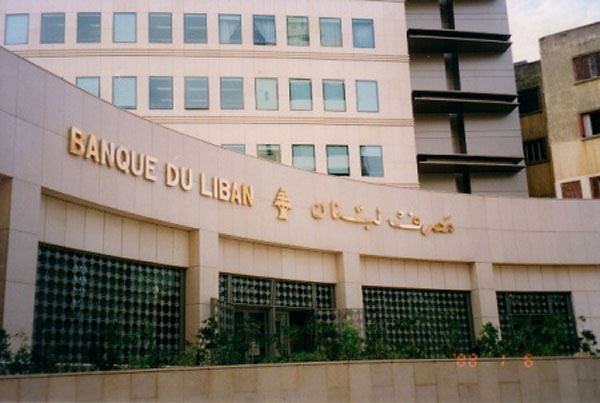How Pressing Is Lebanon’s Financial Challenge?
تقرير من وكالة رويترز: كم هي ضاغطة التحديات المالية في لبنان
Reuters/January 19/19
The country has one of the world’s biggest public debts compared to the size of its economy.
Financial strains in Lebanon have been brought into focus by turbulence on markets, where its dollar-denominated sovereign bonds suffered a heavy sell-off earlier this month following comments by the finance minister about the public debt.
The bonds recovered last week on assurances the government is “absolutely not” planning to restructure the debt and is committed to paying its maturing debt and interest payments at predetermined dates.
But the episode has added to debate about Lebanon’s debt sustainability after warnings from politicians, the IMF and World Bank over economic and financial conditions in a country that has suffered years of low economic growth.
Lebanon’s factional politics has led to years of policy paralysis and obstructed reforms needed to boost investor confidence. More than eight months after an election, politicians have been unable to agree a new government.
What are the problems?
Lebanon has one of the world’s biggest public debts compared to the size of its economy, largely generated through servicing existing debt and high state spending. It amounts to roughly 150% of gross domestic product.
The World Bank has estimated that financial transfers to the state-owned power producer alone averaged 3.8% of GDP from 2008 to 2017. A public-sector wage increase in 2017 and higher interest rates have added to pressures on the budget deficit. Lebanon also has a current account deficit because it imports far more than it exports.
Financing these two deficits has depended on financial transfers from the Lebanese diaspora, but questions over this model have grown.
“At the heart of concerns is the recent slowdown in remittance/deposit inflows, which have traditionally funded a large part (if not all) of Lebanon’s financing requirement,” Goldman Sachs said in a December 3 analysis.
The World Bank, in an October report, said Lebanon was exposed to significant refinancing risks. “Attracting sufficient capital, and in particular deposits, to finance significantly larger budgetary and current account deficits is proving challenging in light of slower deposit growth.”
Lower oil prices have been seen by economists as a major cause of the slowdown, with many Lebanese working in oil-producing Gulf Arab states. Political instability and lower growth in Lebanon have also been cited as factors.
Economic growth has fallen to between 1% and 2% from between 8% and 10% in the four years before Syria’s civil war began in 2011.
How urgent is the situation?
The central bank governor, Riad Salameh, said last month the banking sector was capable of financing the state’s foreign and domestic debt in 2019. The central bank’s net foreign assets stand at around $40 billion.
The financial system has proved resilient through political crises, assassinations and war. The Lebanese pound peg against the dollar has been stable for over two decades.
Often in the absence of effective government, the central bank has maintained stability using stimulus packages and unorthodox financial operations, made possible by large diaspora deposits into the banks.
But since 2016, the slowdown in nonresident inflows prompted the central bank to embark on “financial engineering” to draw more dollars to its reserves.
The World Bank and IMF have praised the central bank for a critical role. But the World Bank’s October report noted that some central bank tools were becoming less effective and that Lebanon’s risk profile was rising sharply.
Confidence is critical to encouraging the inflows upon which the system rests. This would be boosted if a new government formed and moved quickly toward making reforms of the power sector.
This could unlock some $11 billion in funding pledged by foreign states and institutions last year for a capital-investment program.
The power wielded by the Iran-backed Lebanese Shi’ite group Hezbollah is at the heart of tension between Lebanon and Gulf states such as Saudi Arabia that once supported Beirut but have turned their attention elsewhere in recent years.
Goldman Sachs noted that one cause of the slowdown in remittance and deposit growth was “the perceived reduced likelihood of external support in light of heightened tensions between Lebanon and the oil-rich Gulf countries.”
Where does Hezbollah figure in this?
The heavily armed group is listed as a terrorist group by the United States and fought a war with Israel in 2006.
“We have warned for some time that if there was a fresh escalation of tensions with Gulf countries or Israel, that could lead to another period of capital flight that puts the dollar peg under pressure,” said Jason Tuvey of Capital Economics.
The United States has tightened financial sanctions against Hezbollah, part of its wider effort to counter Iran. The Lebanese banking sector has been applying these measures and anti-money laundering legislation.
Lebanon lobbied Washington in 2017 to balance its tough anti-Hezbollah stance with the need to preserve the country’s financial stability. Consequently, sanctions were altered enough to allay fears of major economic damage.
The application of such measures may have weighed on some inflows to Lebanon, though it is difficult to know to what extent, Tuvey said.
Can the next government fix the problem?
Once Prime Minister-designate Saad al-Hariri manages to form a government, investors will be looking for follow-through on promises of reducing the budget deficit. But there are concerns that politics could get in the way of reforms once again.
Citibank warns of Lebanon’s “unsustainable long-term fiscal path”on one hand, and the lopsidedness of its imports and exports.
Georgi Azar /Annahar/January 19/19
Lebanon’s financial strains can be easily traced back to its double deficit, the debt to GDP ratio.
BEIRUT: Citibank is the latest major financial institution sounding the alarm over Lebanon’s dire economic state, warning of its “unsustainable long-term fiscal path.”In a report issued Friday, Citibank noted that Lebanese bonds remain under pressure, as front-end yields “stay very close to cyclical highs” amid contested news of a debt restructuring plan. Last week, markets were rattled after the unsuspecting comments of caretaker Finance Minister Ali Hassan Khalil made rounds before other officials including President Michel Aoun scrambled to alleviate concerns and prop up investors’ confidence. Lebanon’s financial strains can be easily traced back to its double deficit, the debt to GDP ratio on one hand, and the lopsidedness of its imports and exports. Despite remittances falling steadily, Citibank credits the Central Bank’s buildup of FX reserves, “which has quadrupled in the past 10 years” to value around $40 billion, for partly offsetting Lebanon’s “vulnerability and mismatches in the public sector.” Yet the public debt remains unsustainable in the long run, it warns, with large primary surpluses required to stabilize the public debt path. Ideally, Lebanon would have to achieve the target of a real GDP growth rate of 4 percent, which “might be quite ambitious considering domestic political upheaval and global economic slowdown.”Talk of capital controls to be followed by haircuts have also gained traction in recent weeks, yet Citibank remains adamant up to this point that “authorities will try as much as they can to deviate from a USD debt restructuring decision.”To bring Lebanon’s debt/GDP ratio to a sustainable level in case the macro environment forced it, an “implied haircut of 38 percent would be necessary given a primary surplus of five percent and a real GDP growth rate of one percent.””There are other less painful routes to be explored [in regards to possible debt restructuring],” the report notes, “in particular the route of an USD11bn CEDRE international donor investment package conditional on the formation of a new government and fiscal reform implementation.”





















